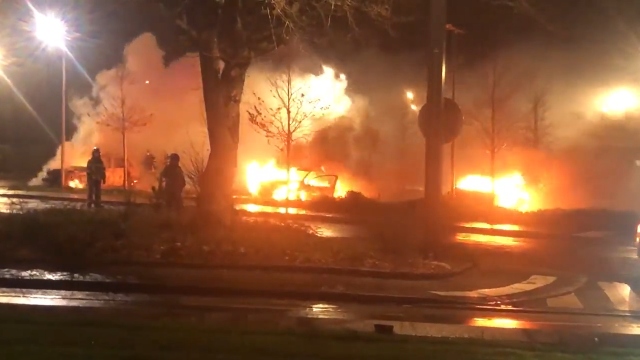
One of the 11 states that formed the wartime South was Virginia, and in fact, the eventual commander of the entire Confederate army was a Virginian named Robert E. Lee.
But not everyone from the Old Dominion wanted to leave the Union. In fact, quite a few counties in northwest Virginia wanted to remain. So they banded together and decided to secede from Virginia.
On June 20, 1863, West Virginia officially became a U.S. state, but before then, about a year earlier, the newly-formed government invited Virginia counties to join them if they were as opposed to backing slavery.
This week, the invitation was renewed, as reported by The Associated Press:
The West Virginia Senate adopted a resolution by voice vote Monday to remind residents of Frederick County, Virginia, that the county has a standing invite — from 1862 — to become part of West Virginia. It now goes to the House of Delegates.
The resolution was introduced by Morgan County Republican Charles Trump, whose district borders Frederick County. Trump was born in Winchester, the seat of Frederick, which is Virginia’s northernmost county.
The Constitution’s Article IV, Sect. 3, describes how new states can be admitted to the U.S. It explicitly says that “no new states shall be formed or erected within the jurisdiction of any other state; nor any state be formed by the junction of two or more states, or parts of states, without the consent of the legislatures of the states concerned as well as of the Congress.
Now, the early 1860s was an unusual time of war and upheaval, so it’s understandable that the state of West Virginia was not properly formed, per the Constitution, because it was “erected within the jurisdiction of” another state. (Related: The big breakup: Residents in a half-dozen states talking secession… we are no longer a unified nation.)
The Left has no moral authority to oppose this
But the Constitution doesn’t say anything about individual counties leaving one state to join another, already-existing state. In fact, our founding document is completely silent on that issue; if a couple of Virginia counties decided to join West Virginia, they aren’t forming a new state, forming a new state out of parts of existing states, or anything of the sort.
What, really, could the federal government do? Or the state governments involved?
The West Virginia resolution opening — or re-opening — the door to the Virginia counties does, however, state that any action would have to be approved by the Virginia General Assembly as well as “a majority of qualified citizens voting upon the proposition” before August 1.
So, that alone means, most likely, that there isn’t going to be any “official” sanctioning of this separation. But does there have to be?
After all, the state of West Virginia was formed, strictly speaking, outside of the Constitution. According to the History Channel, the adoption of West Virginia was done by “referendum.” Article IV, Sect. 3, says that “new states may be admitted by the Congress to this union.” A referendum — a vote — isn’t the same thing as congressional approval.
The point is this: We’re rapidly approaching a time in our country when states and parts of states are opting out of the current order. And frankly, there is no one to blame for this but the Left.
It all started with two issues: Illegal aliens and pot. Left-wing Democrat-run states and cities were the first to adopt “sanctuaries” for illegal immigrants; they were also the first to ignore federal laws against recreational use of pot by passing their own…referendums.
If a Virginia county votes to join West Virginia, who among the Democrat Left has the moral authority to oppose it?
Sources include:
Please contact us for more information.























